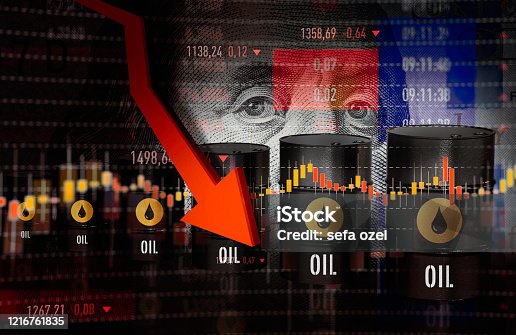Oil prices inched higher on Monday as investors weighed the fallout from escalating Ukrainian drone strikes on Russian oil facilities and fresh warnings from U.S. President Donald Trump that Washington could impose sanctions on Moscow’s energy sector if NATO allies agreed to stop purchasing Russian crude.
At the time of writing, Brent crude futures were trading at $67.31 per barrel, while U.S. West Texas Intermediate (WTI) crude rose to $63.01.
The gains come after both benchmarks advanced more than 1% last week, buoyed by mounting fears that Ukraine is intensifying strikes against Russia’s oil export infrastructure.
Russian officials confirmed that Ukraine had launched a large-scale assault overnight using at least 361 drones, one of which briefly ignited a fire at the Kirishi oil refinery, a major facility in northwest Russia.
The refinery has the capacity to process around 355,000 barrels of crude per day, representing approximately 6.4% of Russia’s total refining capacity.

The weekend’s strikes followed earlier attacks on Primorsk, Russia’s largest oil export terminal. Primorsk can load about 1 million barrels per day, making it a key hub for Russian seaborne crude flows to Europe and Asia.
Analysts warn that further attacks on such facilities could have an outsized impact on global supply.
“The attack suggests a growing willingness to disrupt international oil markets, which has the potential to add upside pressure on oil prices.”
JPMorgan analysts led by Natasha Kaneva
Tony Sycamore, an analyst at IG Markets, added that the latest escalation could signal a deliberate shift in Ukraine’s military strategy: “If we are seeing a strategic shift by Ukraine towards Russian oil exporting infrastructure – that brings upside risks to forecasts,” he said.
U.S. Sanctions Threats Add to Market Uncertainty

While the market is grappling with the potential for Ukrainian strikes to disrupt Russian supply, political pressure from Washington is also fueling uncertainty.
Speaking on Saturday, President Trump signaled that the United States is prepared to impose new sanctions on Russian energy exports. However, he placed the condition that all NATO nations must first stop buying Russian oil and adopt similar measures.
Trump said, “The U.S. is ready to act, but sanctions must be coordinated with NATO allies to be effective,” reiterating his administration’s view that Europe’s continued purchases of Russian oil provide Moscow with revenue to sustain its war in Ukraine.
The statement comes as divisions within NATO remain apparent. Several European nations, including Hungary and Slovakia, have previously resisted efforts to impose outright bans on Russian oil imports, citing energy security concerns.
Investors are also monitoring U.S.-China trade talks in Madrid, which began on Sunday. The discussions come as Washington has pushed its allies to adopt tariffs on Chinese imports, arguing that Beijing has undercut sanctions by continuing to purchase Russian crude.
The outcome of these talks could shape both global trade relations and the energy market outlook.
Meanwhile, concerns over the U.S. economy continue to weigh on sentiment. Softer job-creation data released last week, combined with rising inflationary pressures, have raised fears about slowing growth in the world’s largest oil consumer.
Traders say any signs of weakening demand in the U.S. could counterbalance the upward momentum from supply disruptions.
Balancing Supply Risks with Oversupply Concerns

Despite the potential disruption to Russian exports, some analysts caution that broader supply conditions remain relatively loose.
OPEC+ has already announced plans to ramp up output in the coming months, raising questions about whether higher production could offset the impact of attacks on Russian facilities.
For now, oil markets remain delicately balanced, with geopolitical tensions pulling in one direction and macroeconomic concerns tugging in another.
The coming weeks may prove decisive, as NATO deliberates its stance on Russian oil, Ukraine steps up its offensive, and OPEC+ prepares to execute its next round of production increases.
READ ALSO: Market Cheers as Ghana’s Treasury Auction Breaks Four-Week Drought with 15.8% Oversubscription



















